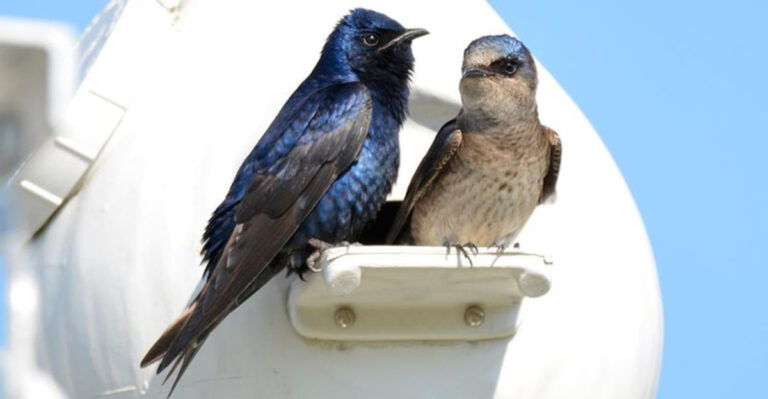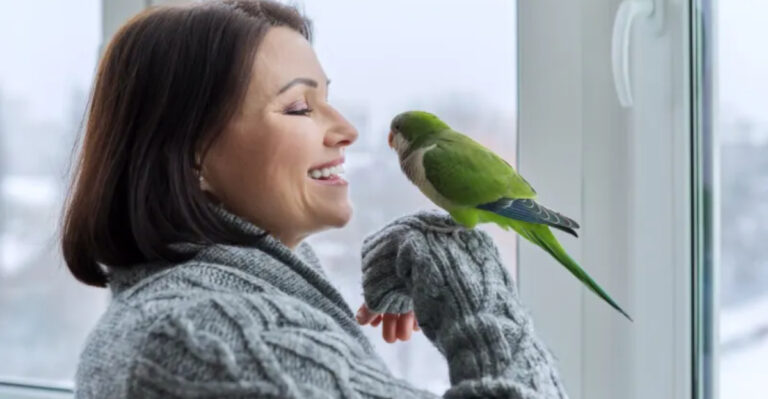How To Raise A Healthy Baby Red-Eared Slider Turtle
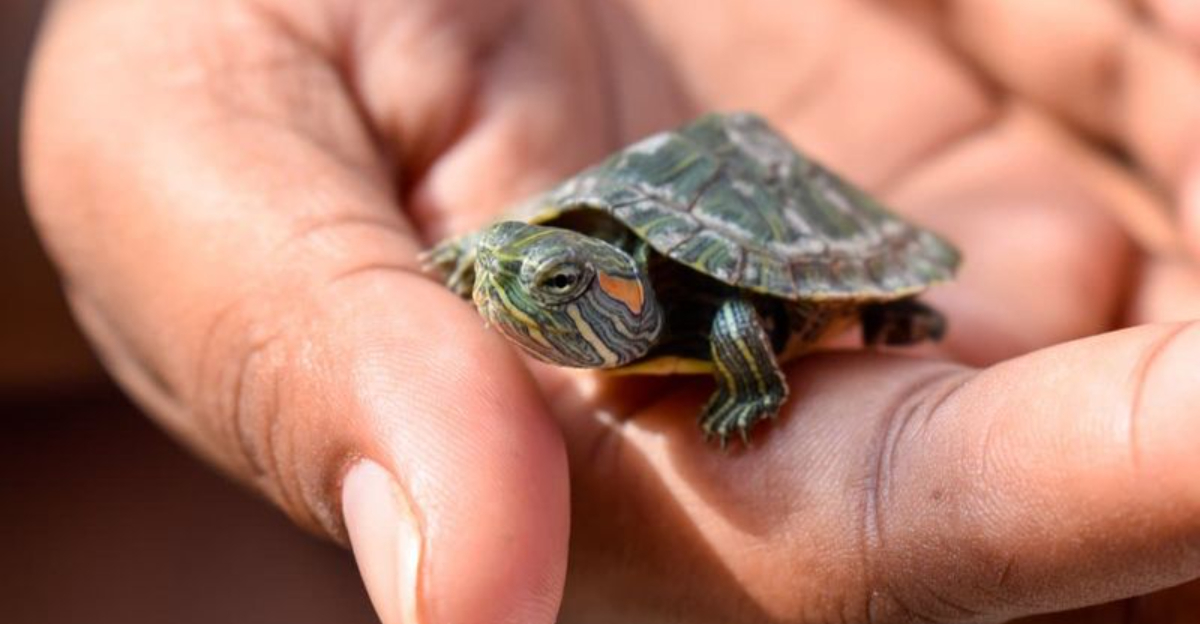
Those adorable quarter-sized baby red-eared sliders can grow into dinner-plate-sized adults with proper care! These popular pet turtles, known for their distinctive red stripes, need specific conditions to thrive in captivity.
Whether you’re a first-time turtle parent or looking to improve your care routine, these essential tips will help your shelled friend live a long, healthy life.
1. Tank Size Matters
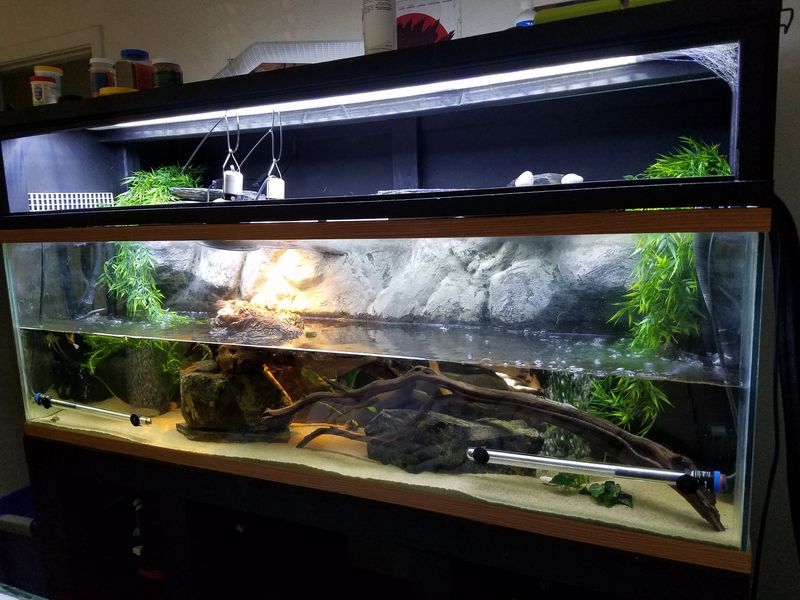
Tiny turtles need room to grow! Start with a 20-gallon tank for hatchlings, but be prepared to upgrade frequently.
Your slider will need 10 gallons of tank space for every inch of shell length. Most adults require at least a 75-gallon habitat to swim comfortably and explore their environment.
2. Create A Perfect Basking Spot

Sliders aren’t fully aquatic – they need a dry place to warm up and dry off! Position a sturdy platform at one end of the tank where your turtle can completely exit the water.
The surface should be rough enough for good grip but not abrasive. Natural cork bark, commercial turtle docks, or even stacked rocks work wonderfully.
3. Heating Requirements
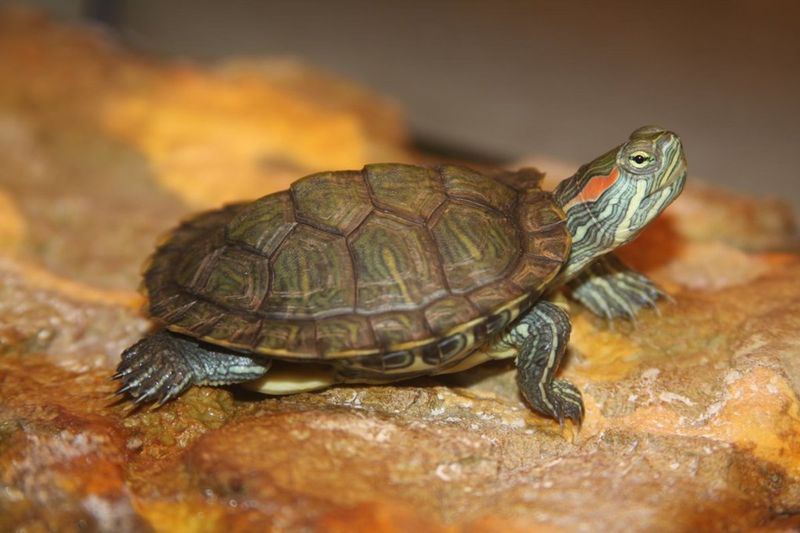
Cold-blooded creatures rely on external heat sources to function properly! Mount a basking lamp above the dry area to create a warm zone between 85-95°F.
Water temperature should stay between 75-80°F for babies, requiring a quality submersible heater. This temperature gradient allows your turtle to thermoregulate by moving between warmer and cooler areas.
4. UVB Lighting Is Non-Negotiable
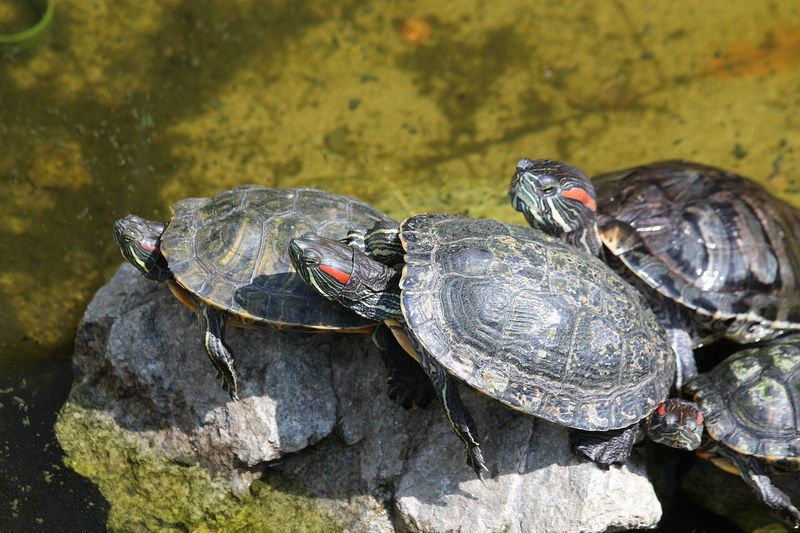
Without proper UVB exposure, turtles develop metabolic bone disease – a painful, often fatal condition. Install a specialized reptile UVB bulb above the basking area and replace it every 6-12 months.
Even though the bulb may still emit light, its UVB output diminishes over time. Natural sunlight works too, but never through glass which filters out beneficial rays!
5. Filtration Prevents Disease

Turtles are messy eaters and prodigious waste producers! Invest in a filter rated for at least twice your tank’s capacity – a 40-gallon tank needs an 80-gallon filter.
Canister filters work best for turtle tanks. Even with good filtration, plan on weekly partial water changes to keep ammonia levels down and prevent shell rot and respiratory infections.
6. Balanced Diet For Shell Health
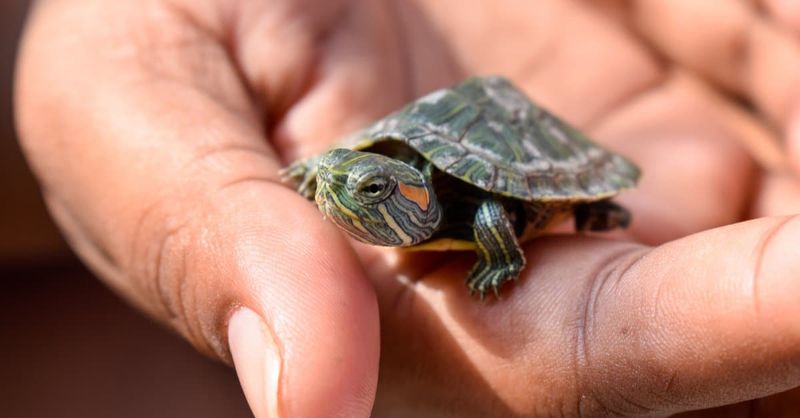
Young sliders need protein-rich diets for growth! Feed commercial turtle pellets daily, supplemented with live foods like crickets, mealworms, and feeder fish for variety.
As they mature, gradually increase plant matter – dark leafy greens, aquatic plants, and occasional fruits. Avoid feeding in the main tank when possible; use a separate container to reduce water contamination.
7. Calcium Supplements Prevent Deformities
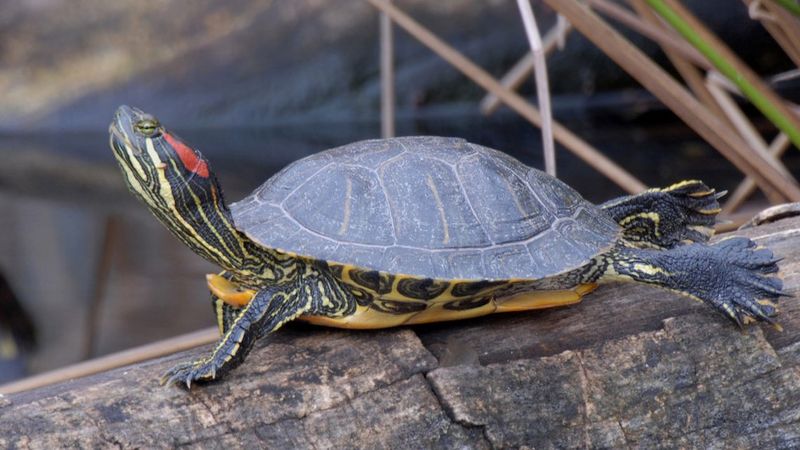
Growing shells demand calcium! Dust food items with reptile calcium powder 2-3 times weekly for babies, reducing to once weekly for adults.
Look for supplements with vitamin D3 if your UVB lighting setup isn’t optimal. Cuttlebone (sold for birds) can also be placed in the tank as a calcium source that turtles can nibble as needed.
8. Regular Shell Checks Save Lives

Soft spots or pyramiding on growing shells signal serious health issues! Examine your turtle’s shell weekly for discoloration, unusual growth patterns, or soft areas.
Healthy shells feel firm and show consistent growth. White fuzzy patches indicate fungal infections, while red or inflamed areas might be bacterial. Early detection of shell problems allows for treatment before conditions become life-threatening.
9. Water Quality Monitoring
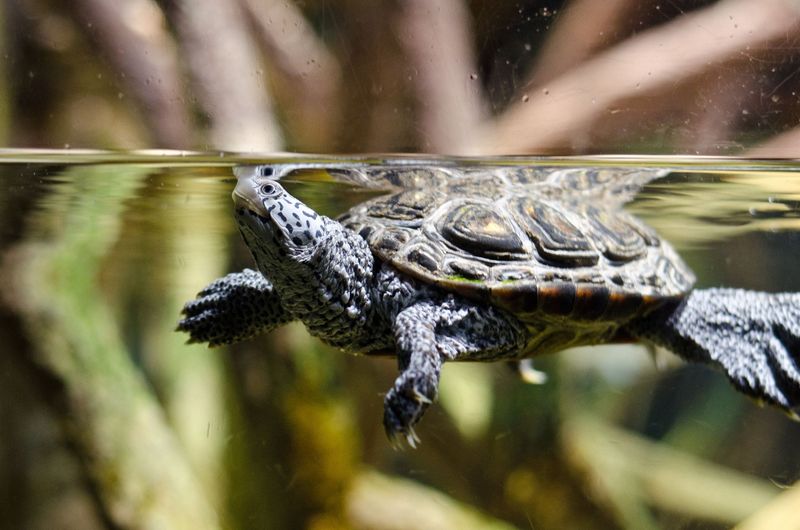
Crystal-clear water doesn’t always mean safe water! Purchase an aquarium test kit to monitor ammonia, nitrite, nitrate, and pH levels.
Ammonia and nitrite should always read zero, while nitrates should stay below 40ppm. The ideal pH range for sliders is 6.5-8.0. Testing weekly helps catch dangerous water quality shifts before your turtle shows symptoms of distress.
10. Handling With Care
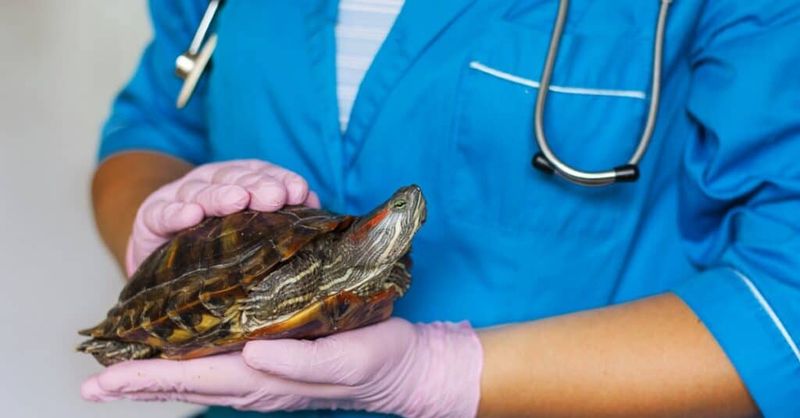
Gentle handling builds trust! Support your turtle’s body from below, never picking them up by limbs or tail. Minimize handling during the first few weeks as they adjust to their new home.
Wash hands thoroughly before and after handling to prevent spreading salmonella. Keep sessions brief – excessive handling stresses turtles, potentially weakening their immune systems.
11. Preventing Escapes

Sliders are surprisingly athletic escape artists! Secure your tank with a tight-fitting mesh lid that allows airflow while preventing jumps and climbs.
Keep water levels at least 2-3 inches below the tank rim. Check that filter cords and heater cables don’t create convenient “bridges” to freedom. A missing turtle can quickly dehydrate or encounter household dangers.
12. Recognizing Illness Signs
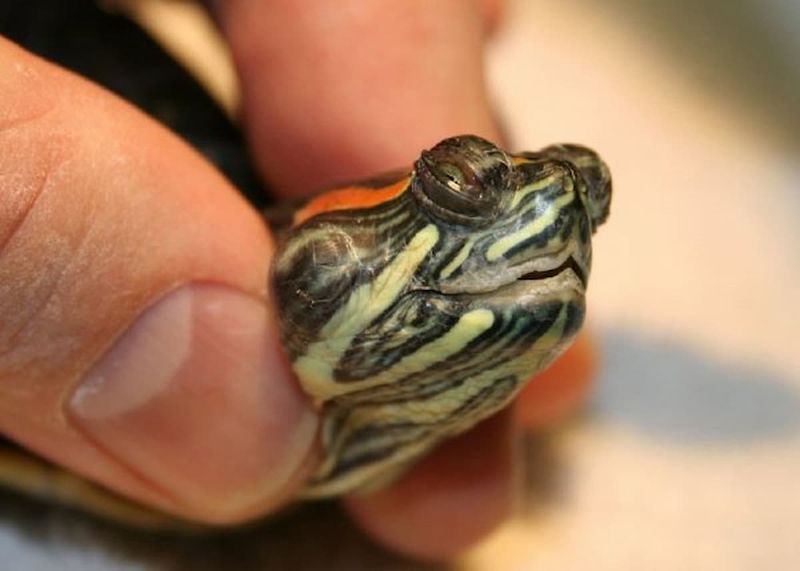
Early intervention saves turtle lives! Watch for decreased appetite, lethargy, swimming problems, or extended basking. Swollen eyes, nasal discharge, or gasping indicate respiratory infections requiring immediate veterinary care.
Find an exotic pet vet before emergencies arise – not all vets treat reptiles. Annual wellness checks can catch health issues before they become serious problems.
13. Hibernation Considerations
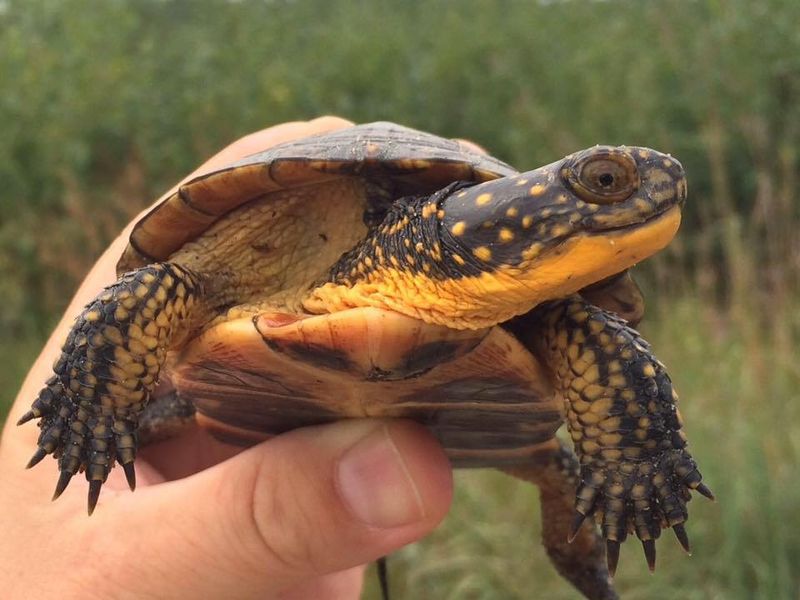
Wild sliders brumate during winter, but captive babies shouldn’t hibernate! Maintain consistent temperatures year-round for juveniles under 3 years old.
Adult sliders may show reduced activity and appetite during winter months even with stable temperatures. Rather than forcing hibernation, simply adjust feeding schedules during these natural slowdown periods while maintaining proper heating and lighting.
14. Long-Term Commitment
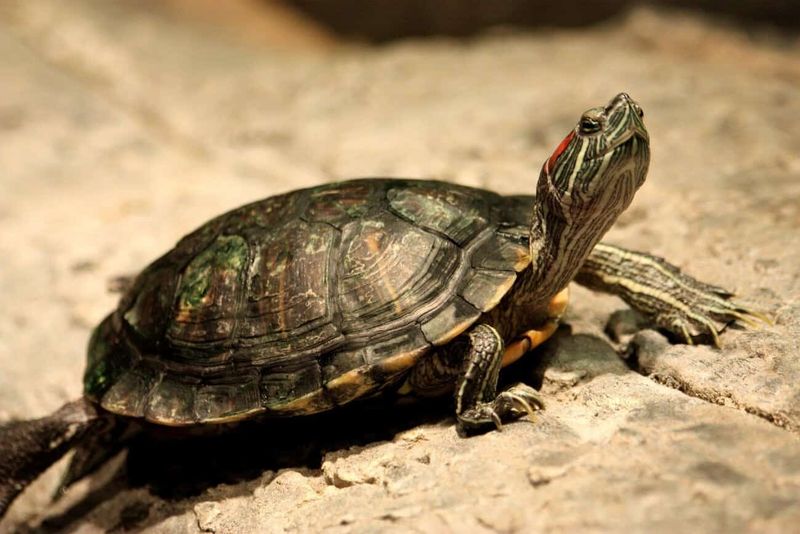
That cute quarter-sized baby is a 50-year responsibility! Red-eared sliders typically live 20-30 years in captivity, with some reaching 50+ years with excellent care.
As they grow, housing requirements increase dramatically. Consider your long-term ability to provide appropriate space and care before bringing home a slider. These turtles often outlive childhood interest, becoming lifelong companions.

